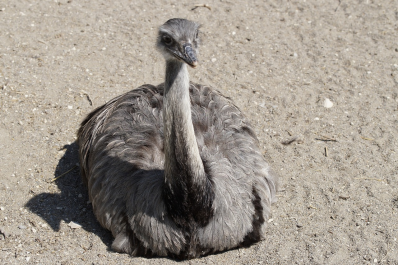Possessive Apostrophes: rhea
The Grammar Bit!
Read the three scintillating sentences opposite.
Notice how the words in bold feature apostrophes to show possession or belonging. For example, the necks belong to the rheas – “the rheas’ necks,” the field belongs to the farmer – “the farmer’s field” and the song belongs to the bird – “a bird’s song.”
With a talk partner, discuss why some words ending in -s do not have an apostrophe. Why might they be different?
Rule
- For a singular noun, add ’s, e.g., farmer’s.
- For plural nouns ending in -s, just add an apostrophe, e.g., rheas’ necks. (Exceptions to this include pluralised nouns that don’t end in -s, e.g., men’s, children’s and women’s.)
Scintillating Sentences
1)The rheas’ necks twisted around each other as they pushed and pulled together.
2) The pair of rheas entered the farmer’s field and ate his crops.
3) Rheas have a loud roar which sounds less like a bird’s song and more like a mammal.

Did you know?
Male rheas can look after up to 50 eggs in a large ground nest at one time! The eggs can belong to many different females.

